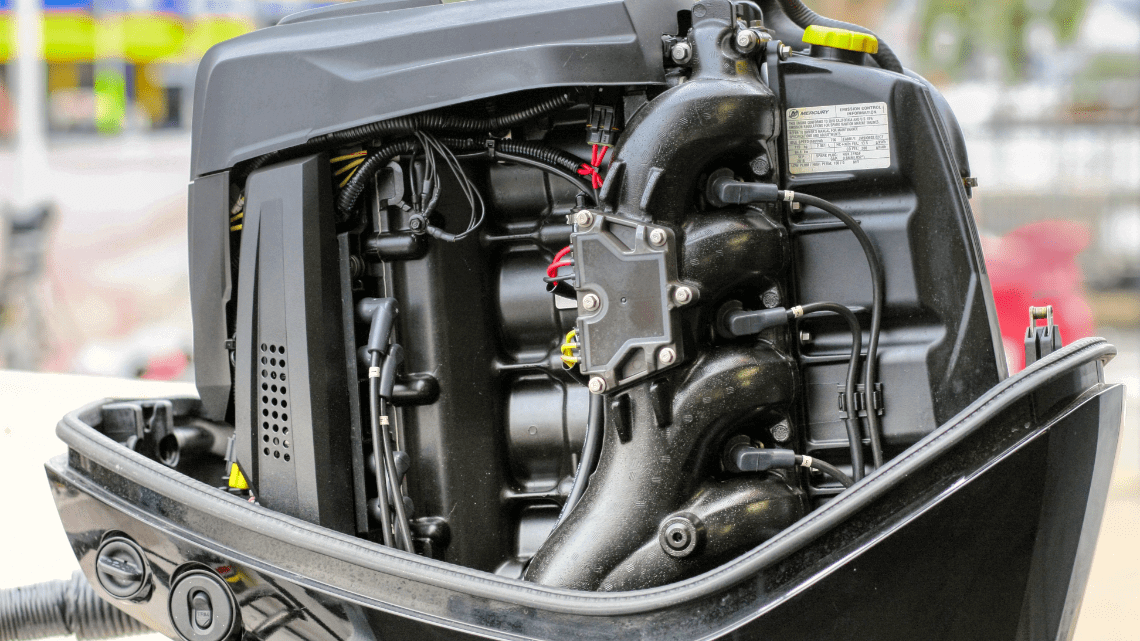Your boat’s engine has a cooling system, powered by a water pump, which it needs to operate. The water pump pulls water from outside the engine, sends it over the power and cylinder heads, and then ejects it outside the engine block. At the heart of your water pump is a small rubber device called an impeller. If your impeller fails, the water pump cannot pull in water, and your engine will overheat – and potentially leave you stranded far from shore, adrift with no power.
To help avoid a critical failure like this from ever happening to you, this article covers essential knowledge every boat owner should know about this crucial device.
In short, as a boat owner you should be aware of:
If in doubt, it is relatively inexpensive to replace your impeller yearly as part of your scheduled boat servicing.
The impeller is a core component of how a water pump moves water around the cooling system. Here is a great video that shows how a water pump uses an impeller to operate:
How many hours your engine has operated between impeller replacement? At a minimum, you should replace your impeller according to your manual – for example, every 200 hours.
Over time, the vanes become rigid and work less effectively, and you may see your engine overheating. If you extend its use beyond what is recommended, cracks at the roots of the vanes will appear and you risk the vanes breaking off inside the cooling system.
How many years between impeller replacement? Has the engine been stored or garaged for an extended period? As a recreational boat owner, 200 hours may seem like a long time, so why should you worry about it? Due to the nature of the stiff rubber used and the tight fit inside the water pump, your impeller lasts longer when used regularly. Conversely, your impeller will wear faster if left for many months without use, and the blades can deteriorate and can even become stuck and break off when the engine starts up.
If you store your boat over the cold winter months, before you get back on the water be sure to get it serviced – don’t risk it.
What type of water has your engine been in? You can expect your impeller to wear much faster in muddy, sandy and saltwater conditions, and less in freshwater. Many, if not most, of our customers here in Brisbane operate regularly in such conditions. Also, if you dry-start frequently for short periods it can melt down your impeller quickly.
How to visually inspect your impeller? If you’re mechanically-minded, you can visually inspect your water pump’s impeller for cracks by following the instructions in your engine’s manual (or by finding a video online). Inspecting your impeller regularly, even monthly may be recommended, depending on your usage. Speak to your engine mechanic for advice specific to your boat and usage.
Ultimately, if you are unsure when your impeller was replaced or if you garage your boat for extended periods, you should definitely have it inspected and likely replaced. Doing so will give you peace of mind and help you avoid the scary experience of breaking down on the water.
Preventive maintenance is the most underrated service in the marine industry. As experienced marine mechanics, we’ve seen it all before and have the equipment and qualifications to maintain and repair engines quickly and affordably.
By being proactive with your maintenance and servicing, you’ll have fewer mechanical breakdowns and more fun on the water – and in the end, isn’t that what it’s all about?
Coorparoo Marine is a trusted and experienced boat dealership in Brisbane. Our highly trained and certified staff take extreme care and pride in their work. For all your boating needs, contact us for professional and personable service.
